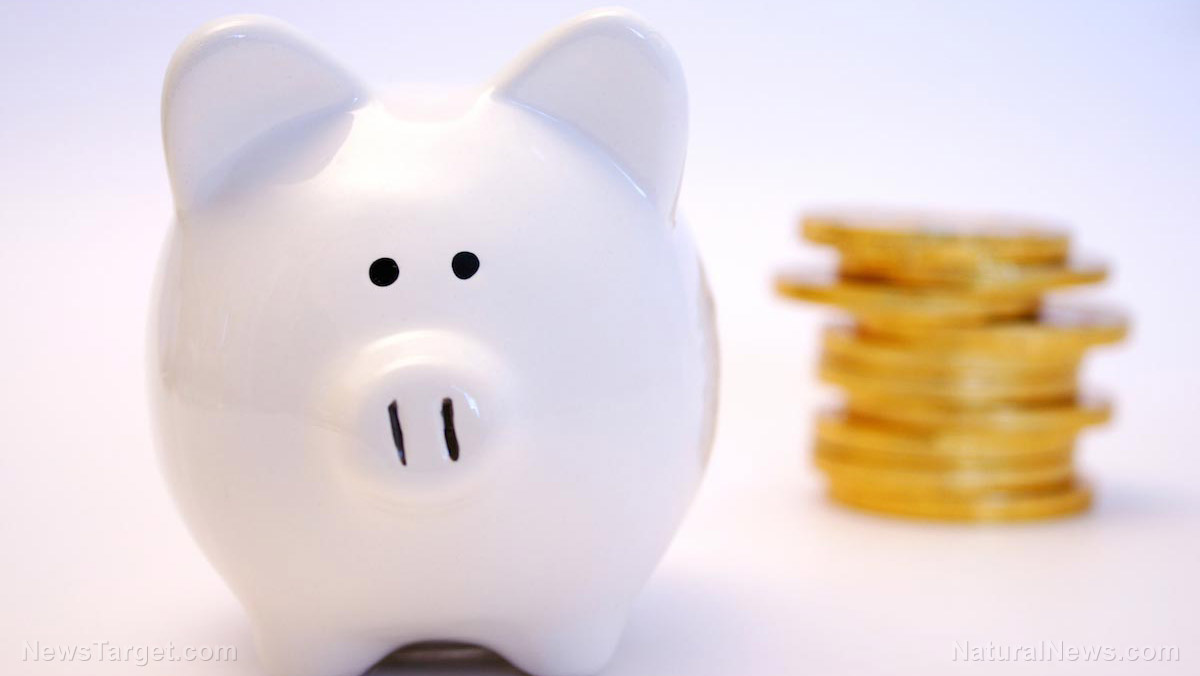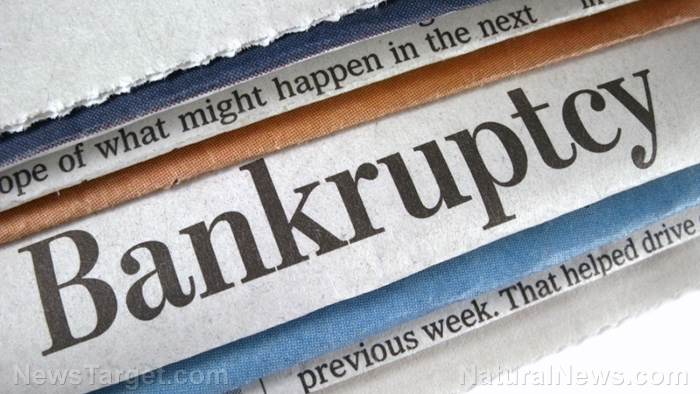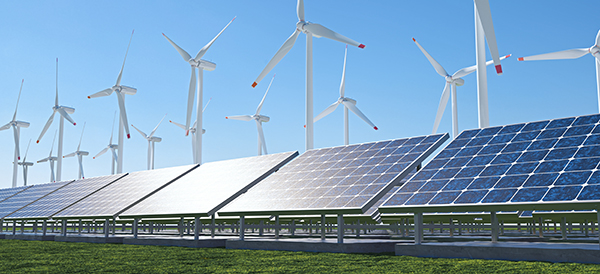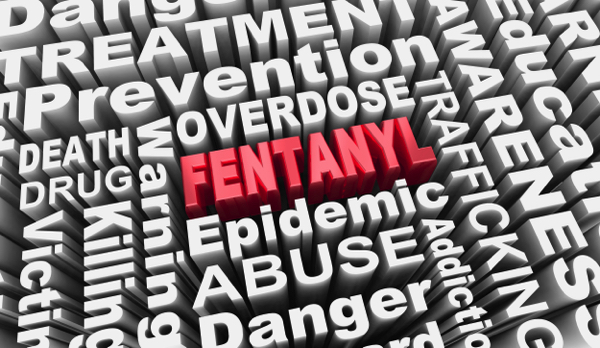 Parler
Parler Gab
Gab
- Despite claims of a strong economy, homelessness in the U.S. is at record highs (especially in California), unemployment is likely much higher than reported (24.3 percent vs. the official 4.2 percent), and mass layoffs continue across industries, including Walmart and Procter & Gamble.
- Food costs (meat, poultry, etc.) are surging, and shrinking cattle herds mean prices won’t drop soon. Families are cutting back, but groceries still strain budgets.
- Major chains like Hooters are closing locations, and small businesses face even worse conditions. The housing market is stagnant, with nearly $700 billion worth of homes unsold.
- Many companies are quietly pushing employees out ("quiet firing") instead of formal layoffs, avoiding severance pay. Financial stress is at an all-time high, with 70 percent of Americans feeling worse off than ever.
- Experts warn of a coming recession, so protect yourself by making changes. Cut unnecessary spending, avoid risky job changes, buy secondhand, pay down high-interest debt and build an emergency fund (ideally three to six months of expenses). The economy isn’t working for most people, and preparation is key as conditions worsen.
Homelessness hits record highs
California, which is often seen as an economic powerhouse, is now home to nearly 25 percent of the nation’s homeless population, with over 187,000 people living on the streets. Two-thirds of the homeless are unsheltered, a crisis not seen since the Great Depression. If one of the richest states can’t solve this, what does that say about the rest of the country?The "true" unemployment rate is 24.3 percent
The government claims unemployment is at a low 4.2 percent, but the Ludwig Institute for Shared Economic Prosperity (LISEP) reports that the real rate is 24.3 percent. Why the gap? Because official numbers don’t count people stuck in poverty-wage jobs or those who’ve given up looking for full-time work.More Americans are delaying major purchases
Nearly one in four Americans are canceling plans to buy homes or cars, while another 32 percent are postponing big purchases due to economic uncertainty. When people stop spending, businesses suffer, leading to more layoffs and closures.Restaurants are collapsing
Hooters suddenly closed 30 locations in June, joining a growing list of chains struggling with declining sales. If even well-known brands like Hooters can’t survive, small businesses are in even worse shape.Mass layoffs continue
Procter & Gamble is cutting 7,000 jobs and companies across industries are downsizing. Even Walmart, the nation’s largest brick-and-mortar retailer, is trimming its workforce, signaling broader economic pressures beyond the tech sector. The Arkansas-based company confirmed layoffs affecting up to 106 employees in its San Bruno, California, offices, according to a May 23 filing under California’s Worker Adjustment and Retraining Notification (WARN) Act. While some affected workers may have the option to relocate or transition to other roles within Walmart, the cuts will be permanent for those unable to secure new positions. This places Walmart among a growing list of major employers, from social media firms to life sciences startups, reducing their Bay Area tech and corporate workforces amid shifting economic conditions. Don't be fooled. The job market isn’t as secure as the headlines suggest.Meat prices are soaring and cattle herds are shrinking
Steak prices are up by seven percent, ground beef by 10 percent and chicken by three percent. The U.S. cattle herd is now the smallest since the 1950s, meaning prices won’t drop anytime soon. Families are cutting back, but groceries still take a bigger bite out of budgets."Quiet firing" is on the rise
Instead of formal layoffs, 53 percent of companies are making work conditions unbearable to push employees out, which is one way they can avoid severance pay and bad press. Workers are being forced out without recourse.The housing market is stagnant
A record $698 billion worth of homes are sitting unsold. With $330 billion in listings older than 60 days, prices are expected to drop further. This is bad news for sellers and a warning sign of weakening demand.Financial stress is at an all-time high
A survey has revealed that a whopping 70 percent of Americans say that they’re more financially stressed than ever. When the majority of the population is struggling, it’s not a personal failure, it points to a systemic crisis.Mainstream media keeps saying "Everything is fine"
Despite all evidence, mainstream outlets downplay the problem. But when homelessness, unemployment and debt are rising, how can anyone claim the economy is healthy?How to protect your money as the economy worsens
With 60 percent of Chief Financial Officers (CFOs) predicting a recession in 2025, now is the time to prepare. Here’s how to recession-proof your finances:Cut unnecessary spending
Review all your expenses, from small purchases to bigger ones. You can save money by canceling unused subscriptions. Downgrade services, such as phone plans, streaming and gym memberships. Additionally, you can save by cooking more at home instead of eating out.Avoid risky job moves
If you’re in a stable job, think twice before jumping ship. Recessions hit low-wage and new hires first.Buy secondhand
Buying used cars, clothes and electronics can save you hundreds, or even thousands of dollars. (Related: Preparing for the unthinkable: How to safeguard your finances against collapse.)Pay down high-interest debt
Credit card rates are brutal. Focus on paying off existing debt before rates climb higher.Build an emergency fund
If money is tight, having an extra $500 to $1,000 can prevent disaster. Aim for at least three to six months' worth of expenses if possible. The economy isn’t working for most Americans, and pretending otherwise won’t fix it. Prepare now, because if trends continue, the worst may still be ahead. Visit Preparedness.news for tips on how to build a reliable food stockpile on a budget. You can also check out Health Ranger Store and Brighteon Store for affordable, lab-verified clean food supplies for your prepping stockpile. Watch this video from "Coffee and a Mike,” as host Michael Farris and Health Ranger Mike Adams talk about war and how it is being used as the cover story for financial collapse. This video is from the Health Ranger Report channel on Brighteon.com.More related stories:
Decentralize TV hosts Mike Adams and Todd Pitner share top strategies for financial freedom and survival. 53% of Millennial and Gen Z consumers are resorting to “buy now, pay later” services and racking up enormous debt. Health Ranger Report: Adapt 2030’s David DuByne elaborates on the escalating global supply chain crisis. Prepping on a budget: How to use your food supply to get through unexpected financial emergencies. Sources include: SHTFPlan.com PPIC.org Finance.Yahoo.com MarketWatch.com Brighteon.comAI-powered DIGITAL WORKERS join Bank of New York Mellon
By Ava Grace // Share
Gene Logsdon unveils the flavor, beauty and smart economics powerhouse in your garden
By Ramon Tomey // Share
Del Monte Foods files for Chapter 11 bankruptcy
By Laura Harris // Share
California’s energy grid reliability in limbo amid budget delays
By Willow Tohi // Share
Ten wild edibles in North America that could save you in a survival situation
By Lance D Johnson // Share
Cultivating a greener future: The timeless wisdom of Carla Emery’s “Growing Your Own Vegetables”
By Kevin Hughes // Share
Governments continue to obscure COVID-19 vaccine data amid rising concerns over excess deaths
By patricklewis // Share
Tech giant Microsoft backs EXTINCTION with its support of carbon capture programs
By ramontomeydw // Share
Germany to resume arms exports to Israel despite repeated ceasefire violations
By isabelle // Share










